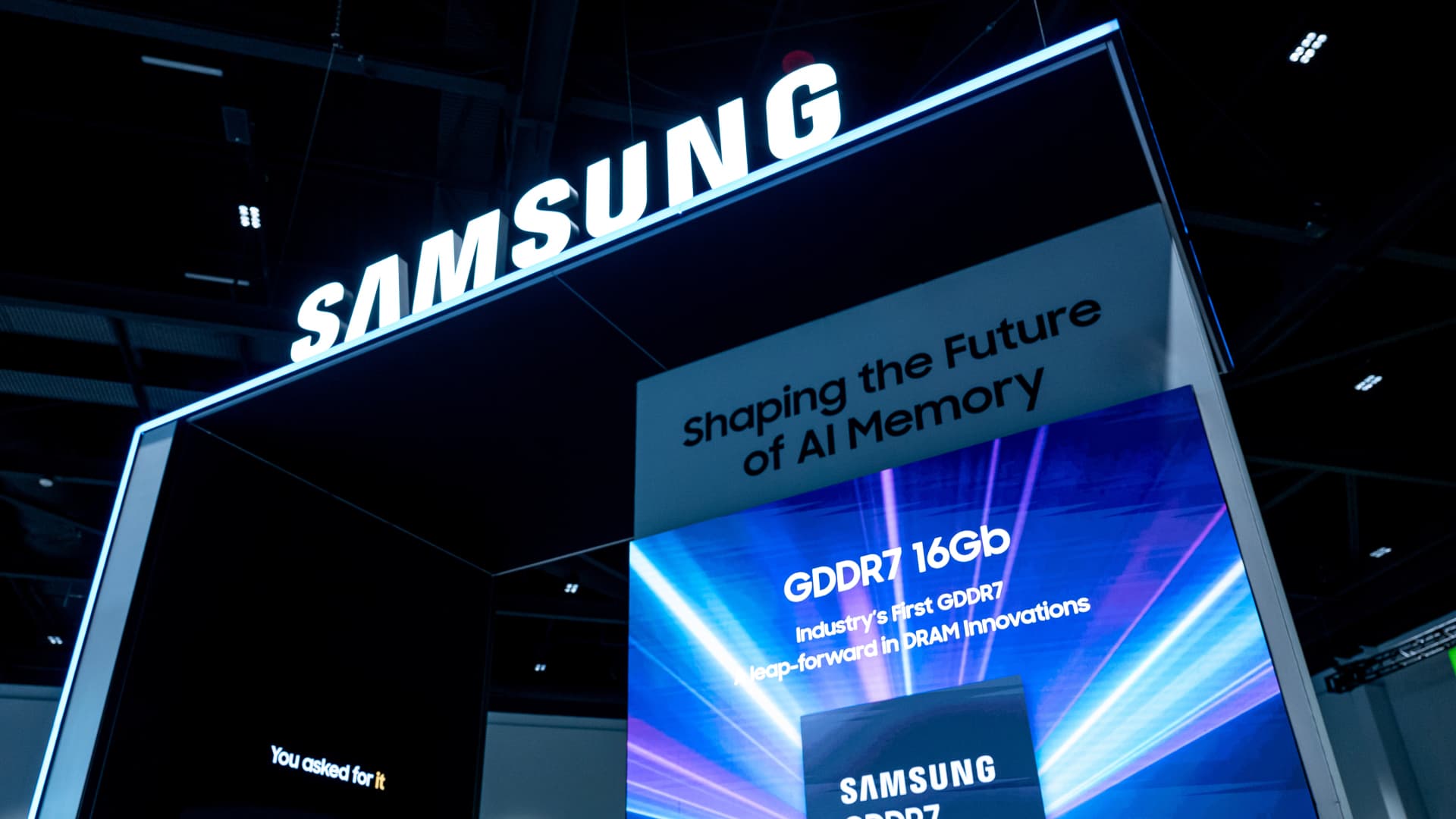Samsung’s Semiconductor Setback: A Deep Dive into the Q2 2025 Earnings Miss
The Semiconductor Storm: A Perfect Unison of Negative Factors
Samsung Electronics’ Q2 2025 earnings report revealed a significant downturn, with a 56% plunge in operating profit compared to the same period last year. The primary culprit behind this decline is the semiconductor division, a traditionally robust profit driver for the company. The semiconductor business, which includes memory chips, processors, and other critical components, has faced a confluence of challenges that have severely impacted its profitability.
AI Chip Demand: A Flickering Flame?
The artificial intelligence (AI) sector has been a significant growth engine for the technology industry, but demand for specific AI chips has shown volatility. Reports indicate that “weak AI chip sales” were a key factor in Samsung’s profit decline. Several factors contribute to this weakness:
HBM Hurdles: Delayed Deliveries and Market Competition
High-bandwidth memory (HBM) is a specialized type of memory chip designed for demanding applications like AI and high-performance computing. Samsung has faced significant challenges in delivering its HBM chips to key customers, notably Nvidia. Delays in shipments have a cascading effect:
China and the Geopolitical Chessboard
The geopolitical landscape plays a significant role in Samsung’s recent struggles. The ongoing trade tensions between the United States and China have resulted in export curbs on advanced chip sales to China. These restrictions limit Samsung’s ability to sell certain high-end chips to Chinese customers, impacting revenue and potentially creating opportunities for rival chipmakers to gain ground in the Chinese market.
Navigating this complex geopolitical environment requires careful strategic planning and a deep understanding of the evolving regulatory landscape. Samsung must balance its relationships with both the U.S. and China while ensuring compliance with international trade regulations.
Diving into the Data: Quantifying the Losses
The preliminary earnings report provides an overview of the challenges, but a closer examination of the data reveals the depth of the issue. Operating profit for the second quarter plummeted to 4.6 trillion won ($3.3 billion), a 55.9% drop compared to the previous year. This figure fell short of analyst expectations, which had pegged the operating profit at around 6.26 trillion won ($4.57 billion).
The semiconductor division, specifically, bore the brunt of the downturn. Analysts estimate that the Device Solutions (DS) unit, which encompasses Samsung’s semiconductor business, earned a mere 400 billion won ($287 million) in the second quarter. This represents a staggering 94% decrease from the 6.45 trillion won earned in the same period last year.
Furthermore, chip revenue fell to 27.9 trillion won, a significant decline compared to the previous year. These figures highlight the extent of the challenges facing Samsung’s semiconductor business and underscore the need for swift and decisive action to address the underlying issues.
Beyond Semiconductors: A Broader Perspective
While the semiconductor division is the primary driver of the earnings miss, it’s important to consider the broader context of Samsung’s overall business performance. Other divisions, such as mobile communications and consumer electronics, may have performed differently, potentially offsetting some of the losses in the semiconductor segment. However, the sheer magnitude of the decline in semiconductor profits suggests that any positive contributions from other divisions were insufficient to mitigate the overall impact.
Furthermore, macroeconomic factors, such as global economic growth, currency fluctuations, and interest rate changes, can also influence Samsung’s overall financial performance. A slowdown in global economic growth, for example, could dampen demand for consumer electronics and other products, impacting Samsung’s revenue and profitability.
Strategies for a Semiconductor Renaissance
Given the challenges facing its semiconductor business, Samsung needs to implement a comprehensive strategy to revitalize its performance. This strategy should focus on several key areas:
A Call to Action: Navigating the Path Forward
Samsung’s recent earnings miss serves as a wake-up call, highlighting the challenges facing its semiconductor business and the need for decisive action. By addressing the underlying issues and implementing a comprehensive turnaround strategy, Samsung can regain its competitive edge and position itself for long-term success. The path forward will require a combination of technological innovation, strategic partnerships, operational efficiency, and a willingness to adapt to the ever-changing dynamics of the global technology landscape. Only through such measures can Samsung hope to weather the current storm and emerge stronger and more resilient than before.











